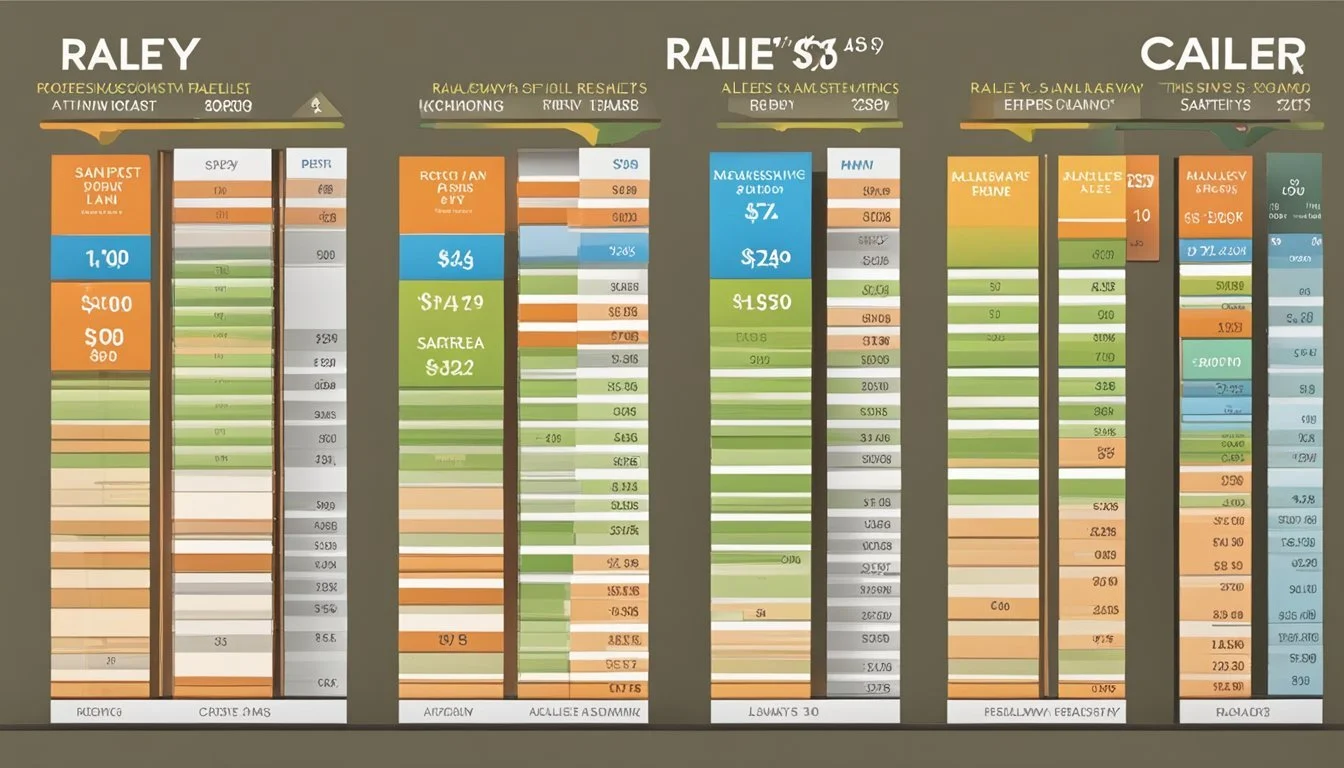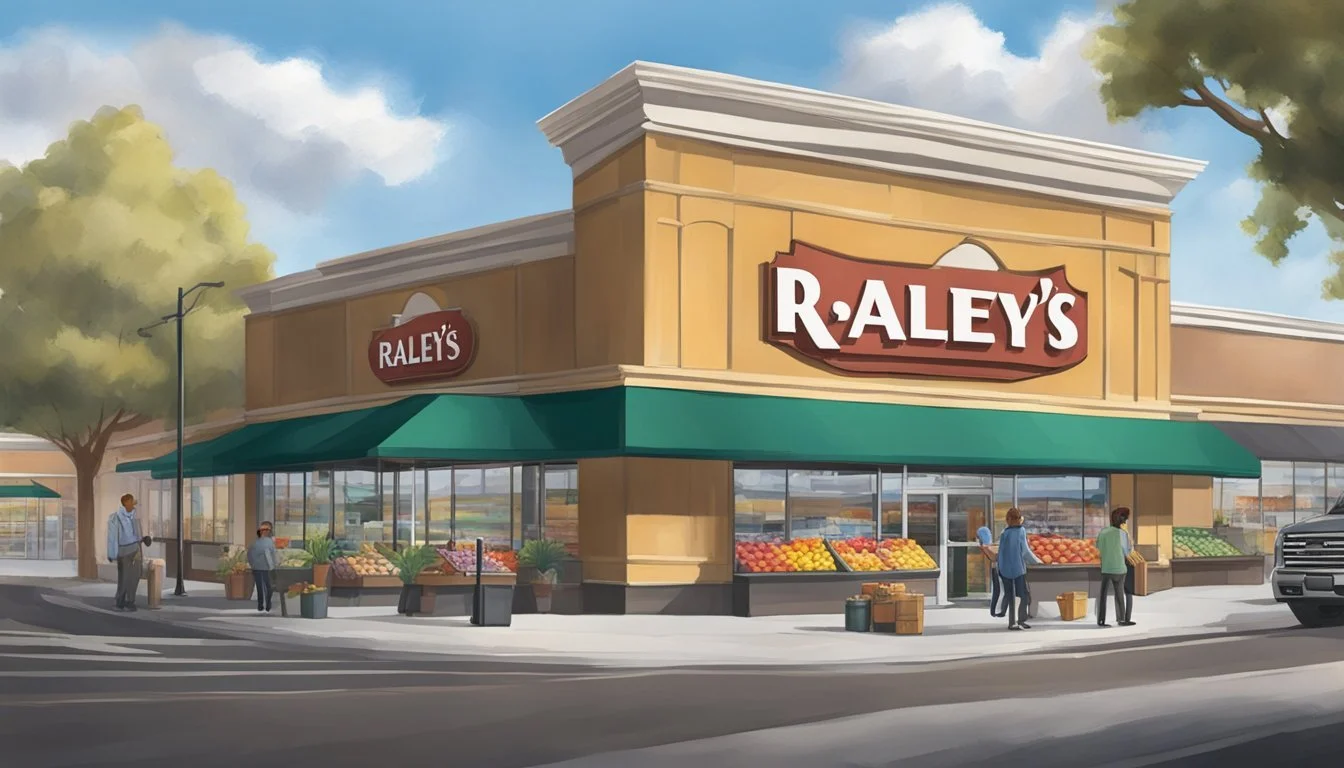Is Raley's Cheaper Than Safeway?
A Comparative Price Analysis of Two Supermarket Giants
Grocery shopping can be a significant expense for many households, prompting consumers to seek out the best deals. In California and Nevada, Raley's and Safeway are two popular supermarket chains that often compete for customers. While Raley's generally offers a slightly more upscale shopping experience, it tends to be marginally more expensive than Safeway for most items.
Price comparisons between the two stores reveal some nuances. Raley's store-brand products are often priced competitively, sometimes even cheaper than Safeway's equivalents. However, name-brand items at Raley's typically come with a higher price tag. Savvy shoppers can find good deals at both chains by taking advantage of sales, loyalty programs, and weekly specials.
Ultimately, the choice between Raley's and Safeway may depend on individual preferences and priorities. Some consumers prioritize Raley's slightly nicer ambiance and perceived higher quality, while others opt for Safeway's generally lower prices on everyday items. Comparing prices on specific products and monitoring weekly ads can help shoppers maximize their savings at either store.
Background of Raley's and Safeway
Raley's and Safeway are two prominent grocery chains with deep roots in California. Both companies have evolved from humble beginnings to become major players in the supermarket industry.
History of Raley's
Thomas P. Raley founded Raley's in 1935 in Placerville, California. The company started as a single store and gradually expanded throughout Northern California. Raley's growth was driven by a focus on quality products and customer service.
In the 1970s, Thomas Raley's daughter Joyce and her husband Jim Teel took over leadership of the company. Their son, Michael Teel, later became CEO, maintaining Raley's status as a family-owned business.
Raley's expanded its presence by acquiring other local chains. In 1992, the company purchased Nob Hill Foods. Raley's headquarters is now located in West Sacramento.
Today, Raley's operates stores under various banners including Raley's, Bel Air, and Nob Hill Foods. The company remains committed to serving local communities in Northern California and Nevada.
History of Safeway
Safeway's origins date back to 1915 when M.B. Skaggs purchased a small grocery store in American Falls, Idaho. Skaggs expanded rapidly, and by 1926, he had 428 stores across 10 states.
In 1926, Skaggs merged his company with Safeway, adopting the Safeway name. The company continued to grow through acquisitions and new store openings.
Safeway became a national chain, expanding beyond its western roots. In 2015, Safeway merged with Albertsons, creating one of the largest food and drug retailers in the United States.
Throughout its history, Safeway has been known for innovations in the grocery industry, including the introduction of self-service stores and private label brands. The company continues to operate stores under the Safeway name in many regions.
Comparative Analysis: Pricing
Raley's and Safeway employ different pricing strategies, impacting shoppers' overall costs. Regular prices, sales, and loyalty programs all factor into the comparative value between these two grocery chains.
Assessment of Average Prices
Raley's tends to have slightly higher regular prices on common items compared to Safeway. For a family spending $250 per week on groceries, this price difference can add up over time. However, Raley's often offers higher quality products, especially in their produce and meat departments, which some shoppers feel justifies the premium.
Safeway frequently uses loss leaders - deeply discounted items to attract customers. These can result in significant savings on select products. The chain also runs regular weekly sales, allowing savvy shoppers to stock up on discounted essentials.
Deals and Savings Opportunities
Both stores provide loyalty programs and digital coupons to help customers save. Safeway's Just for U program offers personalized deals based on shopping history. Raley's Something Extra program provides points on purchases that can be redeemed for discounts.
Safeway often has more frequent and widespread sales across various departments. Their larger size allows them to negotiate better deals with suppliers, potentially passing savings to customers. Raley's sales tend to be more targeted but can offer deeper discounts on specific items.
Holiday promotions, such as Valentine's Day specials, are common at both chains. Safeway typically offers a wider range of discounted items during these events. Raley's focuses on premium offerings at competitive prices for holidays.
Product Range and Quality
Raley's and Safeway differ in their product offerings and quality standards. Both chains aim to meet diverse customer needs, but each has its own strengths and specialties.
Fresh Produce and Meats
Raley's emphasizes high-quality produce and meats. Their fruits and vegetables are often locally sourced and fresh. The meat department features a wide selection of cuts, including premium options. Safeway offers competitive prices on produce and meats, with a focus on variety.
Raley's produce section typically includes more organic choices. Their meat counter often provides custom cuts and specialty items. Safeway's produce turnover can be higher due to more foot traffic, potentially resulting in fresher items.
Organic and Specialty Items
Raley's carries a broader range of organic and specialty products. Their stores feature extensive selections of natural and gluten-free foods. Safeway has expanded its organic offerings in recent years but may have a more limited selection compared to Raley's.
Raley's often stocks hard-to-find ingredients and gourmet items. They cater to food enthusiasts with artisanal cheeses and specialty oils. Safeway's organic section is growing, with their O Organics line providing affordable options. Both chains offer prepared foods, but Raley's tends to have more upscale choices.
Store Experience and Services
Raley's and Safeway offer distinct shopping environments and amenities for customers. The layout, atmosphere, and additional services can impact the overall grocery experience.
Store Layout and Shopping Experience
Raley's stores typically feature wider aisles and a more spacious layout compared to Safeway. This design allows for easier navigation, especially for families with children or shoppers using carts. The atmosphere in Raley's tends to be calmer and less crowded.
Safeway stores often have a more compact layout, which can make shopping quicker but may feel more cramped during busy times. Both chains prioritize clear signage and logical product organization to help customers find items efficiently.
Raley's generally employs more checkers, potentially leading to shorter wait times at checkout. Safeway has been investing in self-checkout options to speed up the process for customers with fewer items.
Additional Services
Both Raley's and Safeway provide deli counters with prepared foods and custom orders. Raley's often emphasizes local and organic options, catering to health-conscious shoppers. Safeway typically offers a wider variety of national brands.
Grocery delivery options are available from both chains. Safeway has partnered with third-party services for same-day delivery in many areas. Raley's offers its own delivery service in select locations, focusing on personalized customer service.
Loyalty programs differ between the two. Safeway's Just for U program provides digital coupons and personalized deals. Raley's Something Extra rewards program offers points on purchases that can be redeemed for discounts.
Both supermarkets provide pharmacy services, but availability may vary by location. Raley's pharmacies often have shorter wait times due to lower customer volume compared to Safeway.
Consumer Convenience and Accessibility
Raley's and Safeway differ in their approaches to consumer convenience and accessibility. Both chains aim to provide convenient shopping experiences but have distinct strategies and geographic focuses.
Location and Reach
Raley's primarily serves Northern California and Nevada. The chain has a strong presence in Sacramento, the Bay Area, and the Tahoe region. Safeway, on the other hand, operates on a larger scale with stores across the western United States.
In urban centers like Sacramento, consumers may find multiple Raley's locations, including the popular Land Park store. Safeway tends to have a wider reach, with more stores in suburban and rural areas.
Raley's focuses on tailoring its offerings to local communities. This approach can result in stores that feel more personalized to neighborhood preferences.
Shopping Options and Flexibility
Both Raley's and Safeway offer various shopping options to meet consumer needs. Online ordering and grocery delivery services are available from both chains, catering to customers who prefer shopping from home.
Raley's eCart service allows for easy online ordering and pickup. Safeway provides similar options through its website and mobile app.
In-store experiences differ between the two. Raley's often emphasizes a more upscale atmosphere with specialty departments. Safeway stores typically offer a broader range of products, including more budget-friendly options.
For quick trips, Safeway's larger network of stores may provide an edge in convenience. However, Raley's loyal customers appreciate the chain's focus on quality and customer service.
Brand Loyalty and Customer Satisfaction
Raley's and Safeway have distinct approaches to building customer loyalty and satisfaction. Their strategies impact how shoppers perceive value beyond just price comparisons.
Customer Ratings and Reviews
Raley's tends to receive higher customer satisfaction ratings compared to Safeway. Shoppers praise Raley's for its clean stores, friendly staff, and high-quality produce. The chain's focus on local and organic offerings appeals to health-conscious consumers.
Safeway garners more mixed reviews. Some customers appreciate its wider selection and convenient locations. Others criticize inconsistent product quality and customer service across stores. Both chains have loyal followings, but for different reasons.
Consumer review sites show Raley's averaging 4 out of 5 stars, while Safeway typically rates around 3.5 stars. These ratings reflect overall shopping experiences beyond just pricing.
Retail Strategies and Customer Retention
Raley's employs a "Something Extra" loyalty program to retain customers. It offers personalized deals and rewards based on shopping habits. The program has over 1.8 million members, with 400,000 considered "extremely loyal."
Safeway uses a combination of loss leaders and its "Just for U" digital coupons to drive repeat business. The chain focuses on competitive pricing for staple items to attract budget-conscious shoppers.
Both stores use private label brands to build loyalty. Raley's house brands are often praised for quality, while Safeway's generic staples are known for value. These strategies aim to differentiate the chains and keep customers coming back despite price fluctuations.
Regional and National Presence
Raley's and Safeway have distinct regional footprints and market positions in the grocery industry. Their expansion strategies and competitive standings differ across various locations.
Expansion and Market Coverage
Raley's primarily operates in Northern California and Nevada. The chain has a strong presence in Sacramento and extends to South Lake Tahoe. Raley's also owns Nob Hill Foods and Bel Air, expanding its reach in specific local markets.
Safeway, in contrast, has a much broader national presence. It operates stores across the United States, with a significant footprint in the Western and Mid-Atlantic regions. In California, Safeway competes directly with Raley's in many locations.
Competitive Standings
In Northern California, Raley's holds a notable market share, often competing closely with Safeway. However, both face competition from other chains like Grocery Outlet, FoodMaxx, and Foods Co.
Safeway's larger scale allows it to leverage economies of size, potentially affecting pricing strategies. In areas where both operate, Safeway typically maintains a slightly lower price point than Raley's.
In Santa Cruz, Safeway has a stronger presence compared to Raley's. The competitive landscape in this area includes other players like Giant and Von's, influencing local pricing dynamics.








